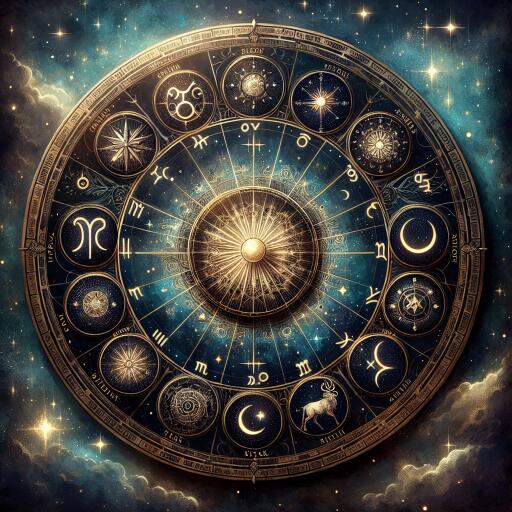The Intersection of Astrology and Technology: Navigating the Digital Cosmos
In an era where technology pervades every aspect of our lives, it’s fascinating to see how ancient practices like astrology have adapted and flourished in this new digital landscape. From personalized horoscope apps to sophisticated software that maps out detailed astrological charts, technology has revolutionized the way we access and interpret the stars. This intersection of astrology and technology opens up a realm of possibilities for both enthusiasts and skeptics alike, inviting us to explore the cosmos through a modern lens.
The Digital Revolution of Astrology
The roots of astrology stretch back thousands of years, making it one of the oldest forms of esoteric knowledge. Traditionally, astrologers would spend hours, if not days, painstakingly calculating planetary positions by hand to create a natal chart. This process, while deeply insightful, was labor-intensive and prone to human error. Fast forward to the present day, and this ancient practice has undergone a digital transformation. Modern software can now generate intricate astrological readings in seconds, democratizing access to this age-old wisdom.
Moreover, the rise of social media and digital communication has played a significant role in astrology’s resurgence in popular culture. Platforms like Instagram and Twitter have become fertile ground for astrological memes, daily horoscope predictions, and interactive content, bridging the gap between celestial movements and daily life. These digital channels have not only made astrology more accessible but have also fostered a vibrant community of followers keen on exploring the zodiac’s mysteries.
Technological Advancements in Astrological Practices
Technology has introduced a plethora of tools that enhance the accuracy and depth of astrological interpretations. Astrology software, for instance, can calculate precise planetary positions for any given date, time, and location, accounting for intricate aspects such as retrogrades, houses, and planetary angles. This level of detail was unimaginable just a few decades ago and provides a much richer understanding of an individual’s astrological blueprint.
Astrological apps are another breakthrough, offering personalized daily, weekly, and monthly horoscopes straight to our smartphones. Some apps even incorporate artificial intelligence to generate insights based on real-time celestial events, creating a unique and interactive way to engage with astrology. This instantaneous connection with the cosmos allows individuals to reflect on their behavior, relationships, and personal growth journey in the context of the stars.
Criticism and Challenge: The Scientific Perspective
Despite its growing popularity and technological sophistication, astrology faces criticism, primarily from the scientific community, for its lack of empirical evidence. Critics argue that astrology’s predictions and insights lack the rigorous testing and validation found in scientific methodologies. However, supporters counter that astrology is more of a symbolic language or tool for introspection rather than a predictive science.
This debate is unlikely to be resolved anytime soon, but technology has undoubtedly enhanced astrology’s appeal, making it more accessible and engaging for those who find value in its insights. Furthermore, some argue that the personal experiences and subjective verifications provided by daily interactions with astrological tools add a layer of personal truth that transcends empirical scrutiny.
Astrology and Personal Development: A Technological Aid
One of the most compelling applications of technology in the field of astrology is its potential for personal development. By providing personalized insights based on intricate astrological algorithms, digital tools can offer guidance on career choices, relationships, and personal growth opportunities. For many, these insights serve as a catalyst for self-reflection and improvement, inspired by the alignment of celestial influences.
Moreover, astrology apps and websites often include educational resources, such as articles, videos, and podcasts, that deepen users’ understanding of astrology’s principles and practices. This fusion of technology and ancient wisdom not only enlightens individuals about their personal astrological makeup but also connects them with a broader narrative of human experience as viewed through the stars.
Conclusion
The fusion of astrology with technology has created a new paradigm for exploring the mysteries of the cosmos. By leveraging digital tools, astrology has become more accessible, engaging, and relevant for a modern audience. While it continues to face skepticism, the technological enhancements in astrological practice offer a fresh perspective for those seeking to understand the intricate dance between celestial bodies and human lives. As we move further into the digital age, the intersection of astrology and technology promises to deepen our connection with the cosmos, blending ancient wisdom with modern innovation in a quest for understanding the seemingly unfathomable universe.
In this digital cosmos, we are reminded that despite our technological advances, we remain deeply connected to the ancient rhythms of the universe. The stars, which have guided humanity for millennia, continue to inspire, challenge, and enlighten us, bridging the past, present, and future in their silent, cosmic dance.


